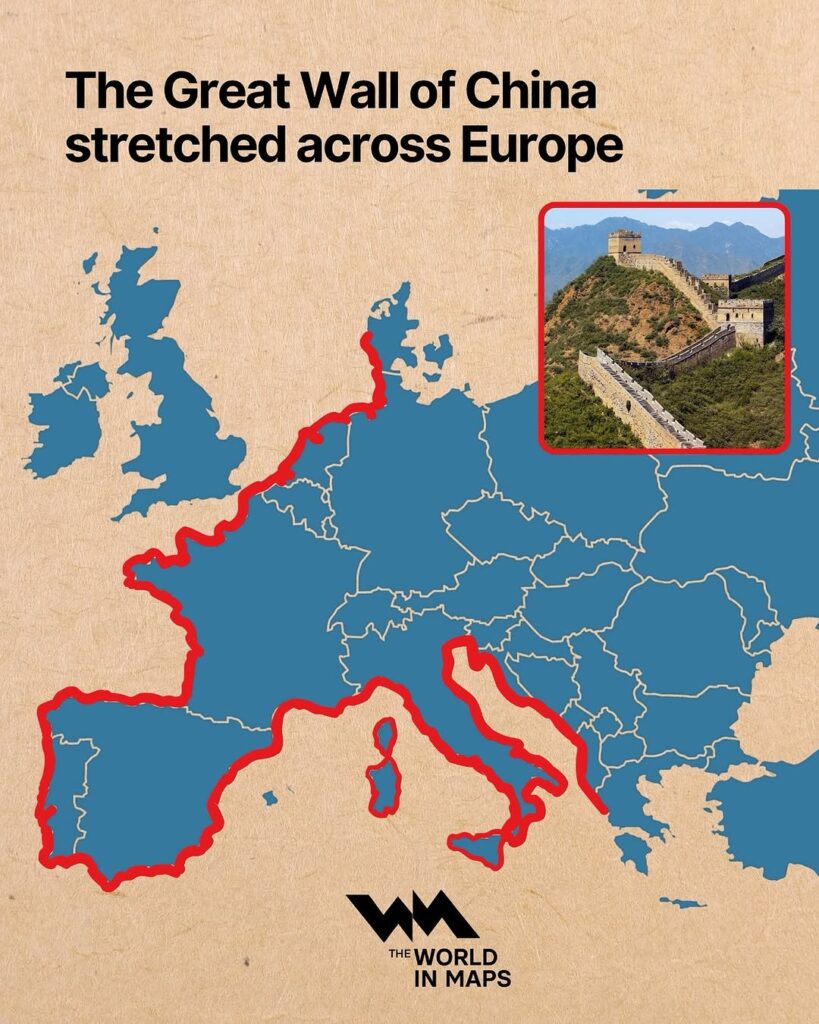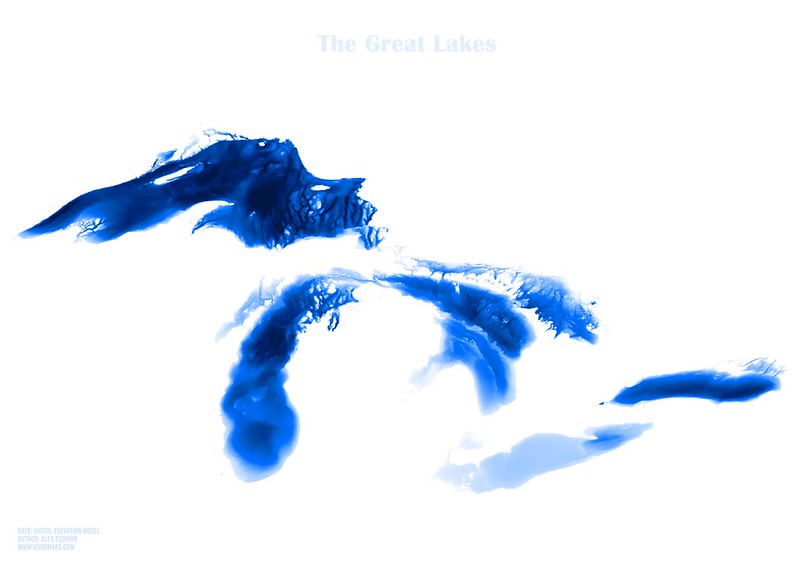How Long Is the Great Wall of China?
The Great Wall of China is often described as the longest structure ever built—but numbers alone rarely do it justice. You can say it’s over 21,000 kilometers long (about 13,170 miles), but what does that feel like on a map? In this post, we’ll explore just how vast the Wall really is through two powerful visuals: one showing its full extent across China and another comparing its length to the entire coastline of Europe. Along the way, we’ll look at how this engineering feat came to be and what it tells us about the people who built it.
Let’s start with a reminder: the Great Wall isn’t a single unbroken wall. It’s a sprawling network of fortifications, built over centuries by different dynasties, adapting to geography from deserts to mountains. The map below shows how these fragments—spanning thousands of kilometers—came together to form the complex defensive system we now call the Great Wall.

This map helps ground us geographically, tracing the Wall’s route from the Bohai Sea (Bohai Gulf on the map) in the east, past the mountains of Hebei and Shanxi, and westward through the deserts of Ningxia and Gansu. While many visitors see the iconic stone sections near Beijing, much of the Wall was built with tamped earth or wood—materials chosen to suit local conditions and available resources. Early segments date back over 2,000 years to the Qin Dynasty (221–206 BCE), although the bulk of the surviving structure was built during the Ming Dynasty (1368–1644).
Now, to help us better understand the true scale of the Wall, let’s step out of Asia for a moment and look at Europe.
The map below, created by @the.world.in.maps, draws a bold comparison: it lays the full length of the Great Wall along the European coastline. Europe’s coastline is estimated to be about 38,000 kilometers (24,000 miles) long when including all inlets, islands, and irregularities (source). The Great Wall, if stretched in a straight line, could cover over half of that distance.

If we imagined relocating the Wall onto Europe’s shores, it would start somewhere near northern Denmark. From there, it would stretch southward past Germany’s coastline and sweep along the low-lying shores of the Netherlands and Belgium. Continuing on, the Wall would hug the western edge of France and wrap its way around the Iberian Peninsula, tracing the Atlantic coasts of both Spain and Portugal. But that’s not where it stops—it would then follow the Mediterranean coastline past southern France and Italy, curving through the Adriatic by Slovenia and Croatia, and pushing down along Greece’s rocky coastlines. In total, this visualization helps us grasp what it really means to have a structure over 21,000 kilometers long—it’s not just long by human standards, but continental in scope.
Understanding the Wall’s length also helps explain the immense logistical and human effort behind it. Laborers, soldiers, and peasants moved millions of tons of earth, stone, and brick using nothing more than hand tools and animal power. And even with centuries to build it, maintaining and garrisoning the Wall posed its own challenges. It wasn’t just a barrier; it was a statement of strength and control over territory.
Despite the scale, myths persist. One popular belief is that the Great Wall is visible from space. However, that’s not true. NASA and several astronauts have confirmed that it’s not visible to the naked eye from low Earth orbit without aid. At ground level, though, the Wall certainly commands attention. Many parts, particularly around Beijing like Badaling and Mutianyu, have been restored and attract millions of tourists every year.
Today, the Wall is a UNESCO World Heritage Site (since 1987) and an enduring emblem of Chinese strength. But it’s also fragile. Natural erosion, urban expansion, and theft of bricks for local construction have damaged many sections. Conservation efforts are ongoing, but the great length of the Wall makes protection a serious challenge.
Have you visited any section of the Great Wall? Share your thoughts below—I’d love to hear what comes to your mind when trying to picture something that long.
For those interested in the Great Wall of China, check out the following books and atlases available on Amazon:








